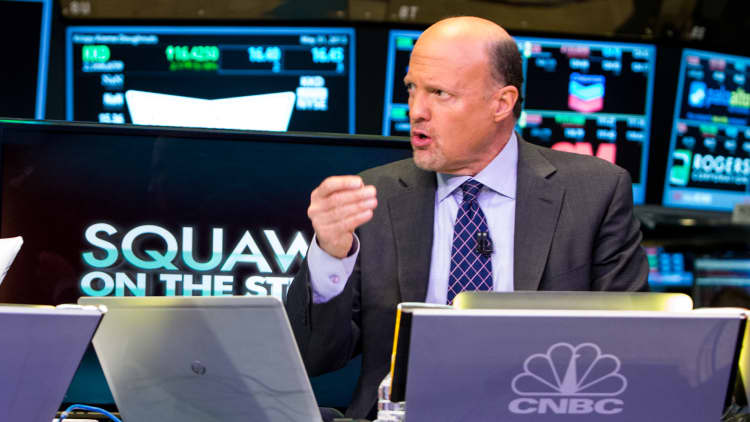
Job growth surged in June, with U.S. companies adding 288,000 to payrolls, indicating that expectations for strong second-half economic growth may be fulfilled.
The unemployment rate dropped to 6.1 percent, its lowest since September 2008, according to data from the Bureau of Labor Statistics. An alternate measure of unemployment that measures those who have stopped looking for work or are working part-time for economic reasons also fell, to 12.1 percent, marking its lowest reading since October 2008.
The level of underemployment actually increased for the month, rising 275,000 to 7.5 million, and part-time positions for noneconomic reasons swelled by 840,000 to 19.5 million. The labor force participation rate was steady at 62.8 percent for the third straight month, though the level remains at a 36-year low.
Economists expected nonfarm payrolls to grow by 215,000 in June and the unemployment rate to hold at 6.3 percent, according to estimates from Dow Jones. That compares to the upwardly revised 224,000 reported for May.
"The headline number and underlying data reinforces the fact that the domestic economy is thriving and on a one-way path to full recovery," said Todd Schoenberger, managing partner at LandColt Capital. "The markets will enjoy this data, which should push the broader averages to higher highs today."
Despite the strong tone to the report, futures rose only modestly, indicating a mildly positive opening for Wall Street but one that should carry the Dow industrials past the 17,000 mark. Interest rates jumped, with the benchmark 10-year Treasury yield up nearly half a point to 2.67 percent. The two-year yield hit a three-year high of 0.52 percent.
The significant improvement in the jobs picture likely will turn the focus to central bank monetary policy.
While the Federal Reserve is reducing the rate of its monthly bond purchasing program, it continues to hold short-term interest rates near zero. Economists recently have been speculating that the Fed may raise rates sooner than current expectations of mid-2015. While the U.S. economy contracted 2.9 percent in the first quarter, Wall Street economists are looking for better than 3 percent growth through the remainder of the year.
"The evident strength of the labor market in June is one of the key reasons why we think the Fed will be persuaded to begin raising interest rates earlier than most expect," Paul Ashworth, chief U.S. economist at Capital Economics, said in a note.
"We suspect that Fed officials will continue to cling to the view that there is still plenty of slack in the labor market. We are not convinced, however, and expect wage growth to accelerate in the second half of this year," he added. "As a result, we expect the Fed to halt its quantitative easing this October and we anticipate that the first rate hike will come in March next year."
Read MoreLayoffs at lowestlevel of the year: Challenger
Peter Boockvar, managing director at The Lindsey Group, said the data will leave the Fed with little choice on rates.
"While wages rose only in line with inflation, the pressures should start to build as a zero rise in the labor force participation is clear evidence that the labor market is much tighter than the Fed thinks and the 6.1 percent unemployment rate has already matched their year end target," he said. Fed Chair Janet Yellen "is not going to be able to wait until May 2015 to raise rates and that is what the US treasury market is responding to today."
Heading into June job growth had been averaging 197,000 per month. Thanks to revisions to previously reported numbers—April's total swelled to 304,000 from 282,000—average job growth for the past three months came in at 272,000.
In a separate report, first-time claims for state unemployment benefits rose slightly to 315,000, a notch higher than expectations of 314,000.

Professional and business services led the pace, adding 67,000 positions, while retail contributed 40,000. Wages rose 0.2 percent, gaining 6 cents to $24.45 an hour, while the average work week held steady at 34.5 hours, a level where it has stayed for four months.
"The wage indicator continues to rise at an accelerated pace suggesting wage gains are poised to quicken in the next several months," said Jim Paulsen, chief market strategist at Wells Capital Management. "And for the Fed and the financial markets, even mildly faster wage inflation could significantly raise anxieties."
Go here for the full BLS report.
Bars and restaurants hired 33,000 new workers, while health care jobs rose by 21,00, and transportation and financial activities each gained 17,000. Manufacturing was up 16,000.
Long-term unemployment also eased, with average duration of joblessness falling to 33.5 weeks, its lowest level since September 2010.
Some other signs were mixed. The diffusion index, which measures the percentage of companies planning to expand, rose from 62.9 to 64.8 for all industries but contracted from 63.6 to 61.1 for manufacturing.
—By CNBC's Jeff Cox.


